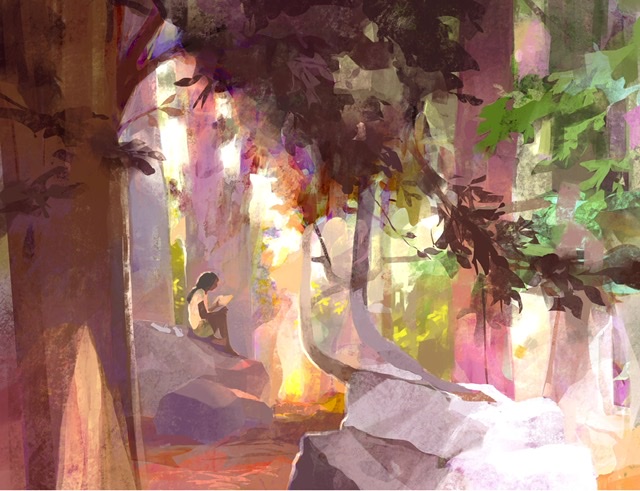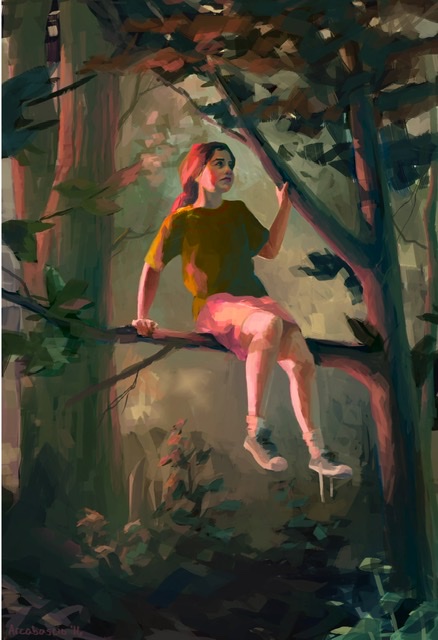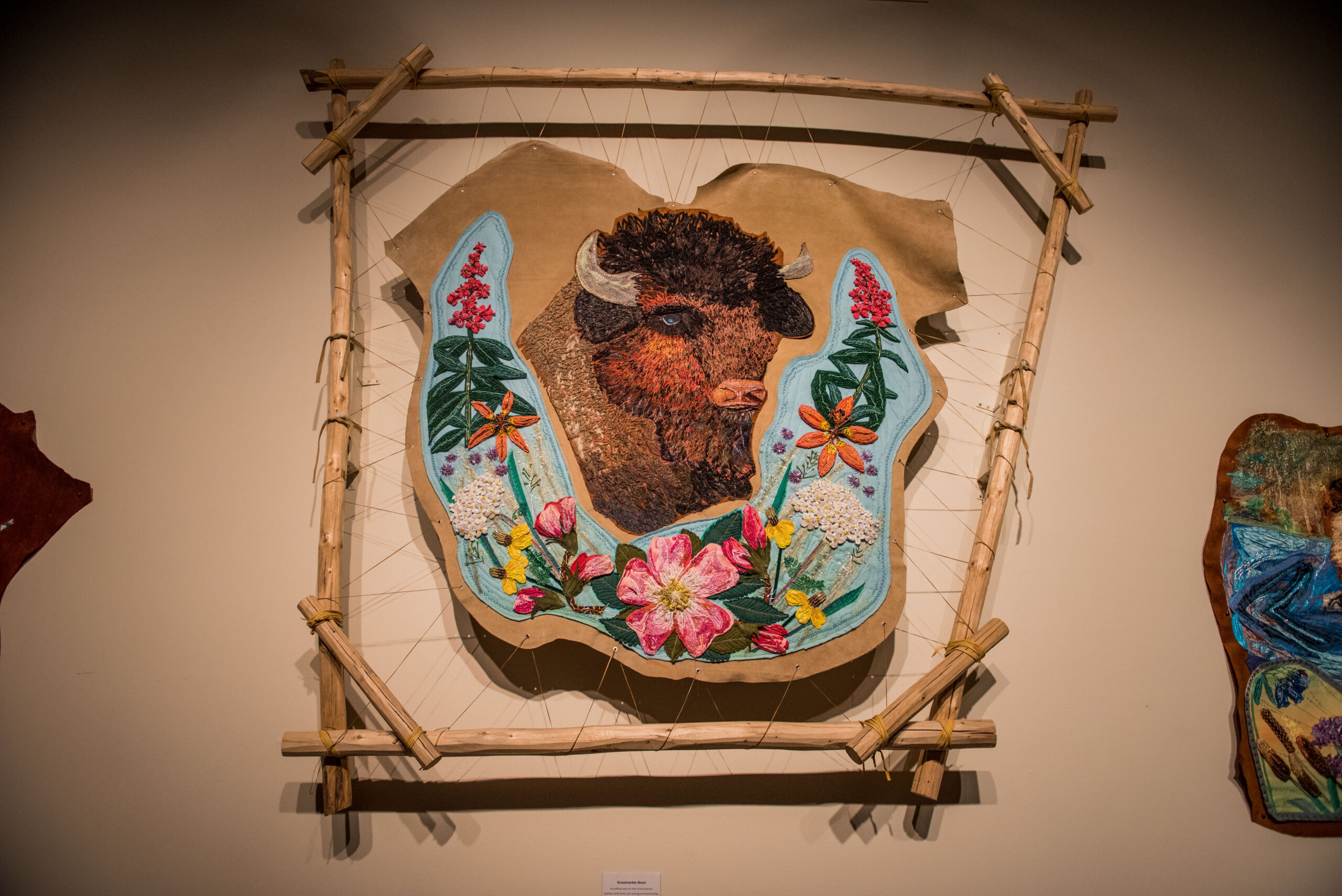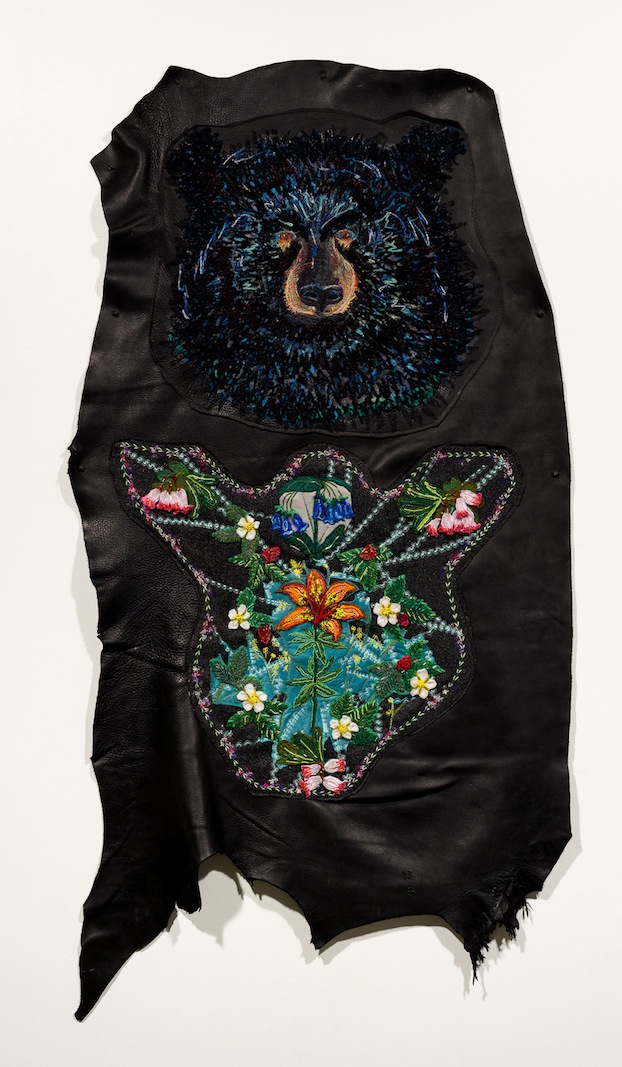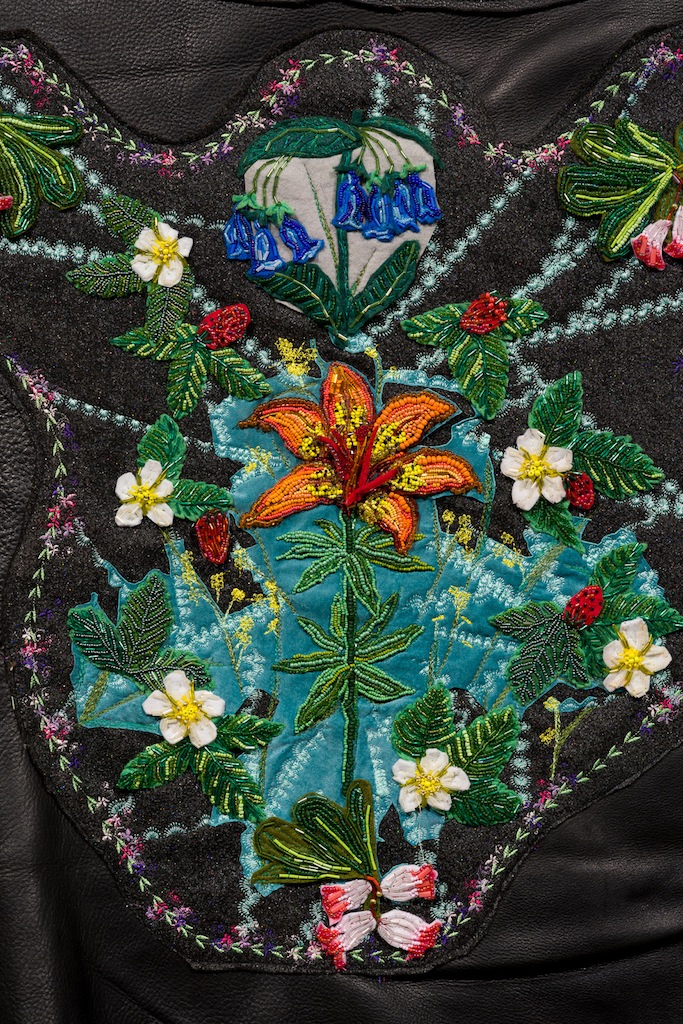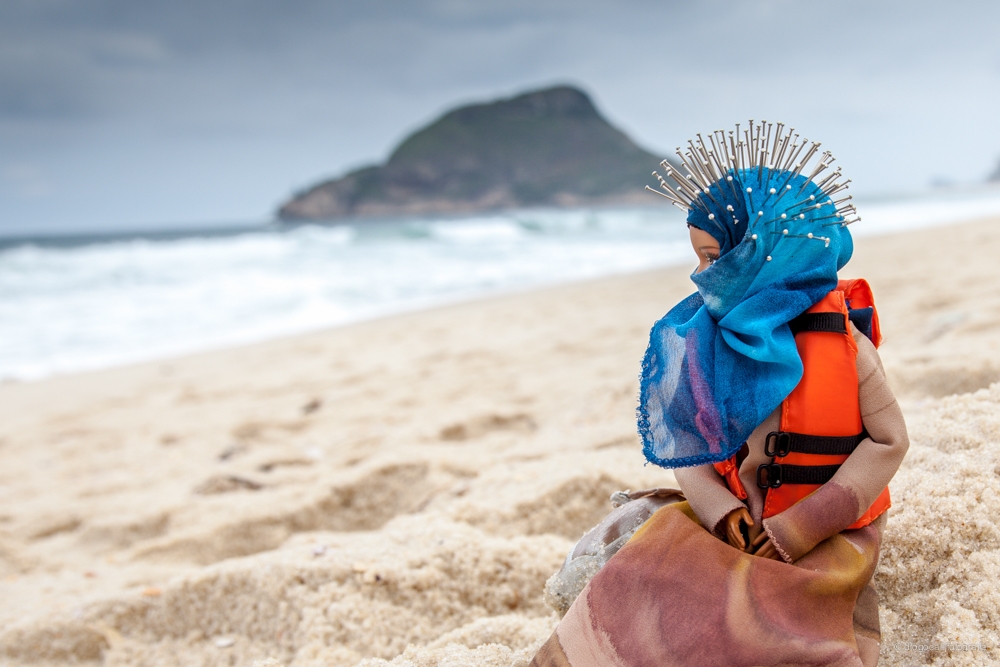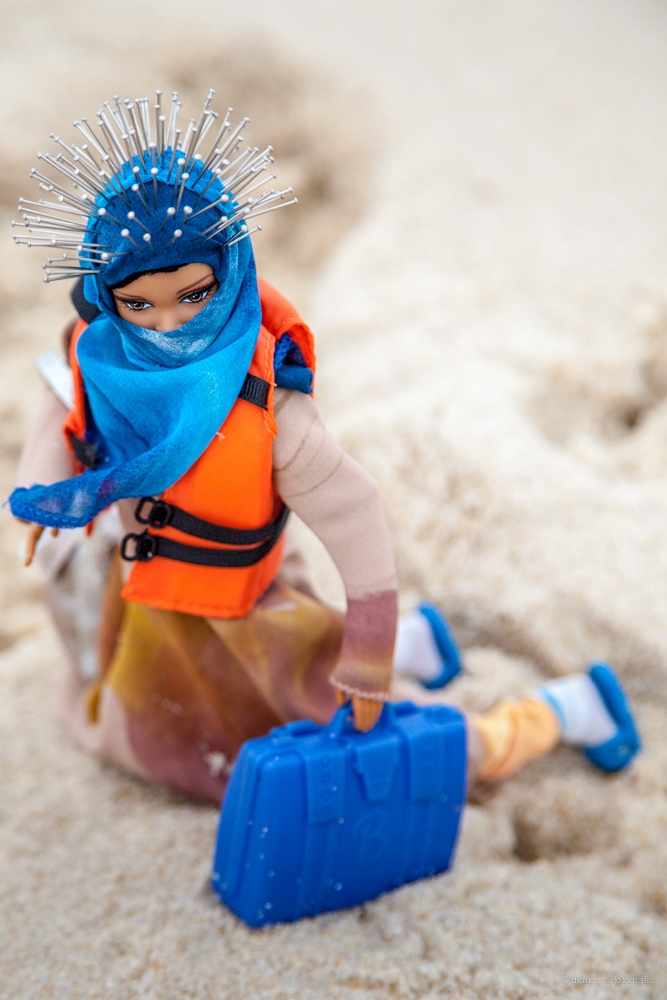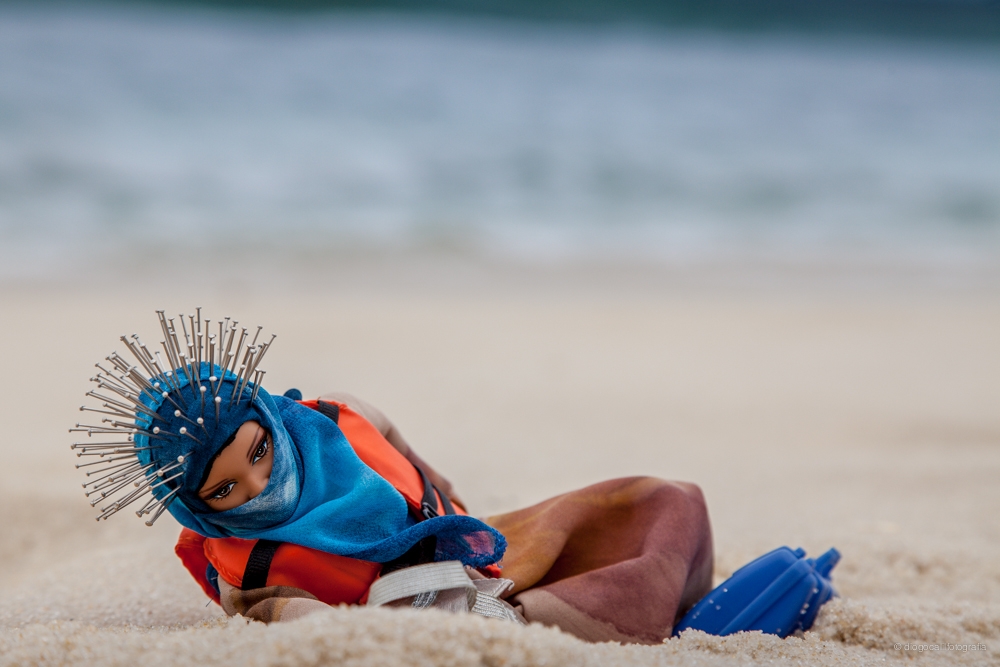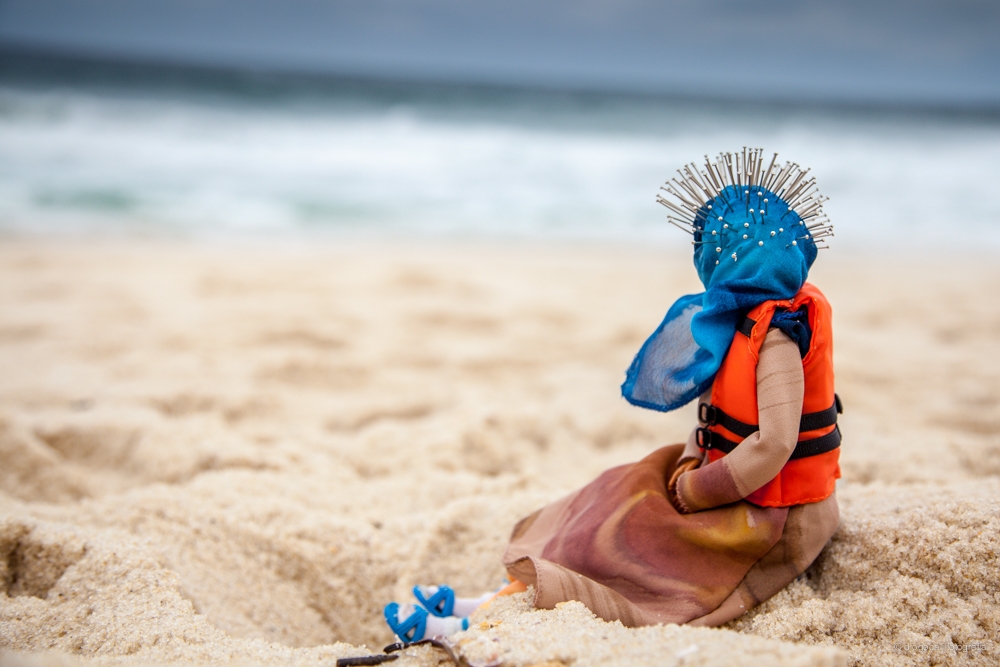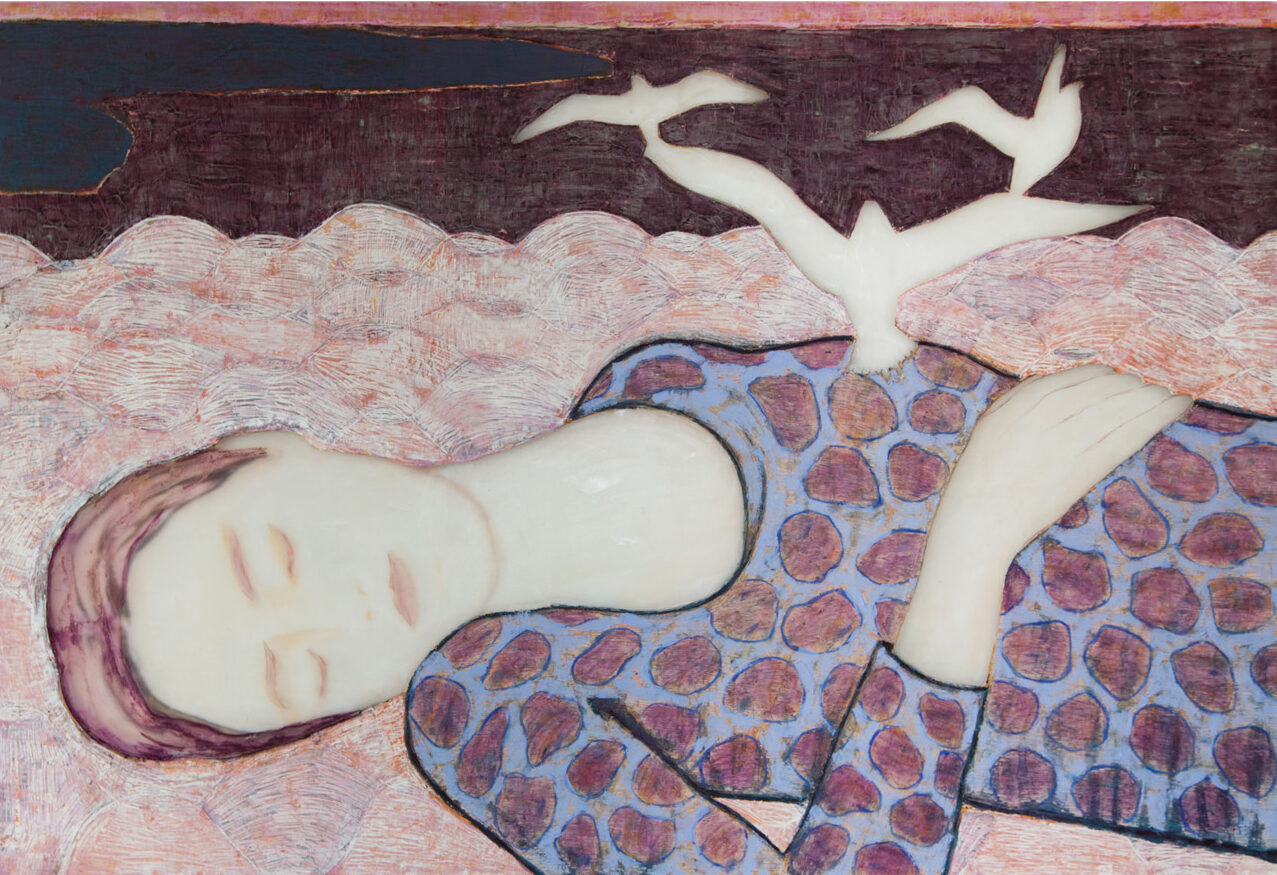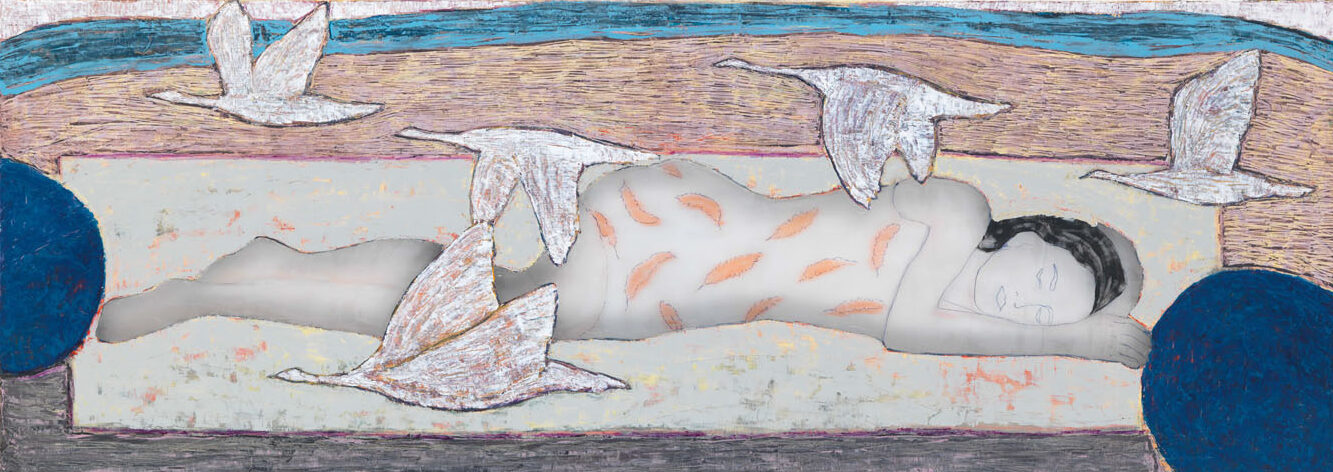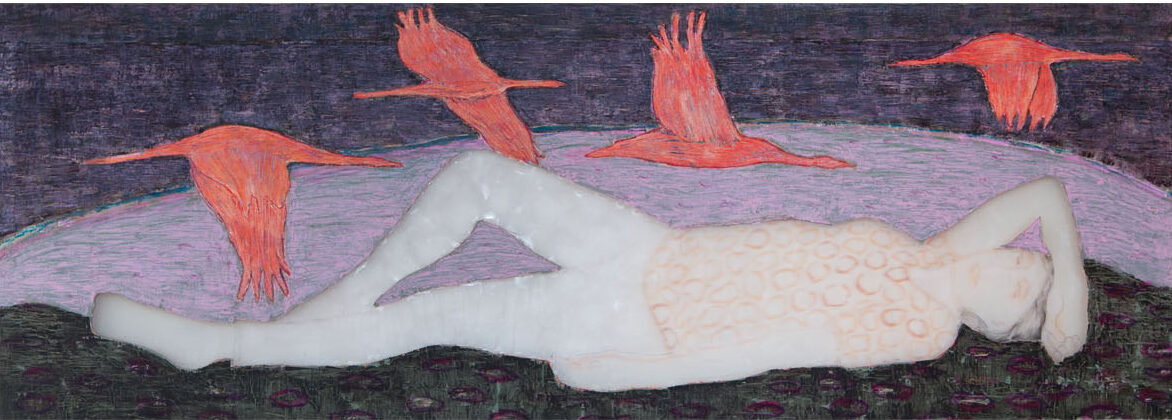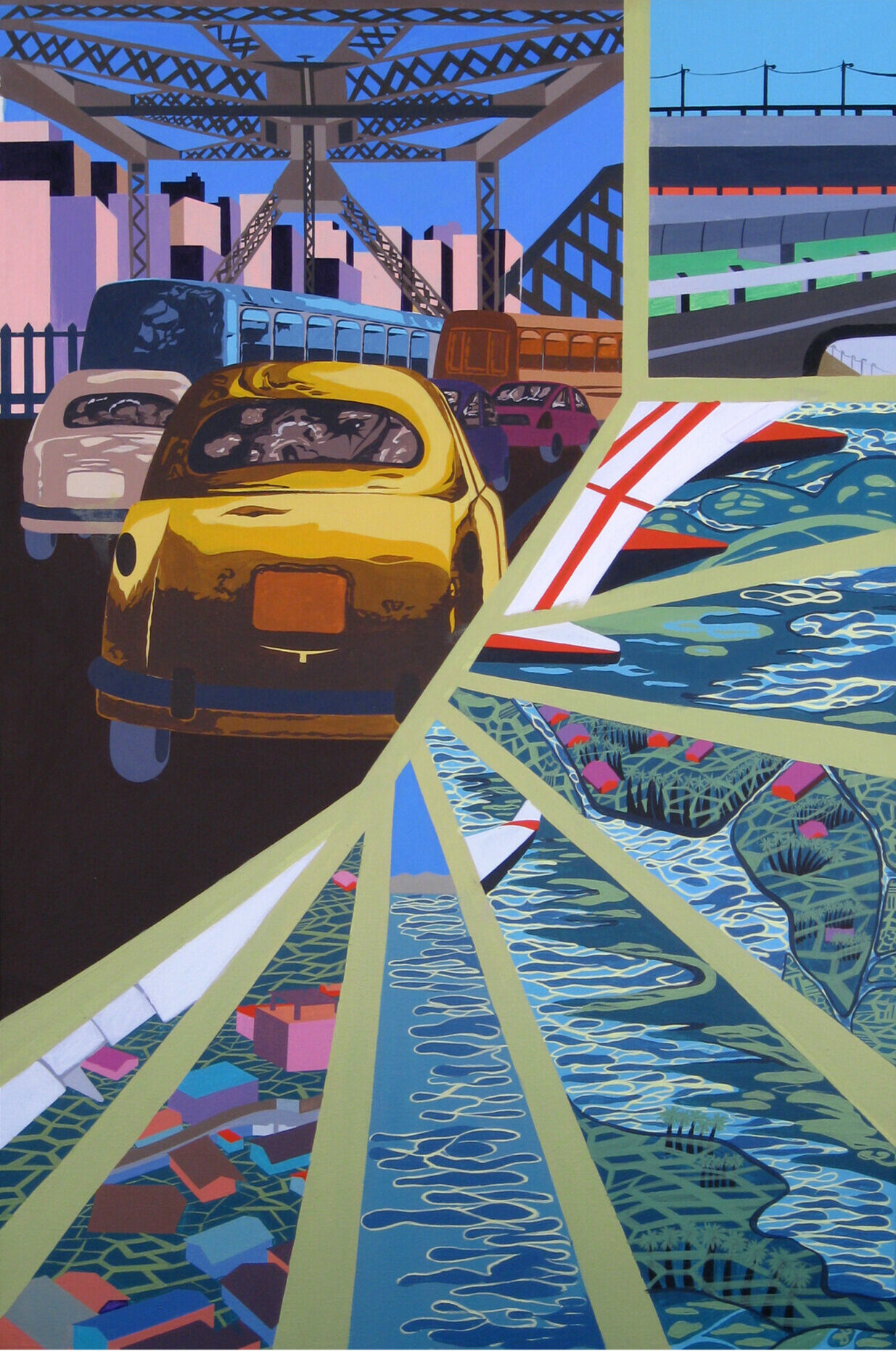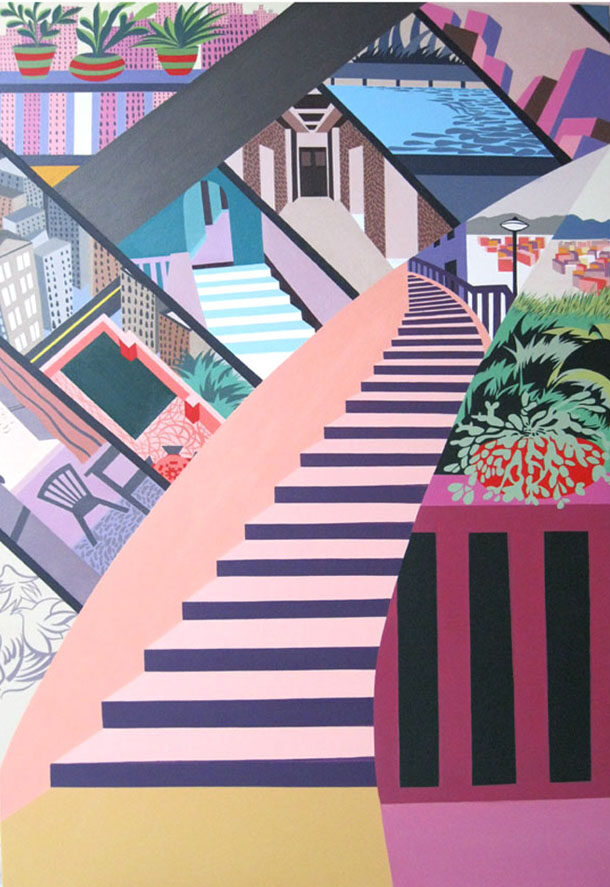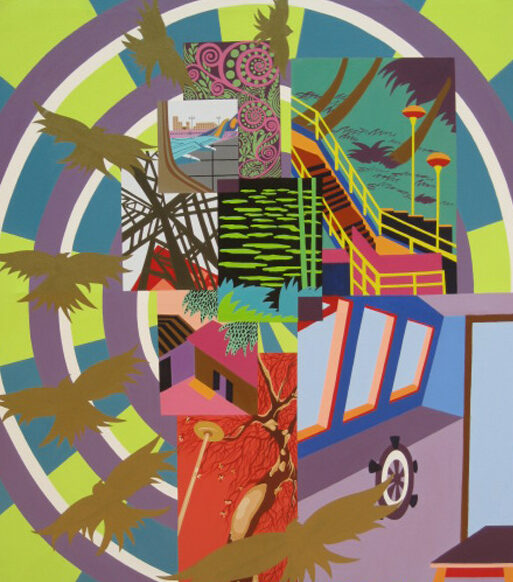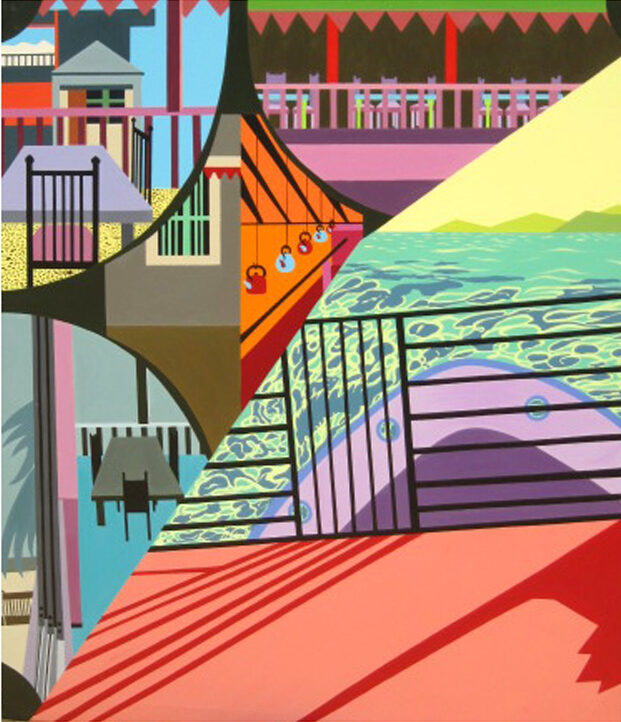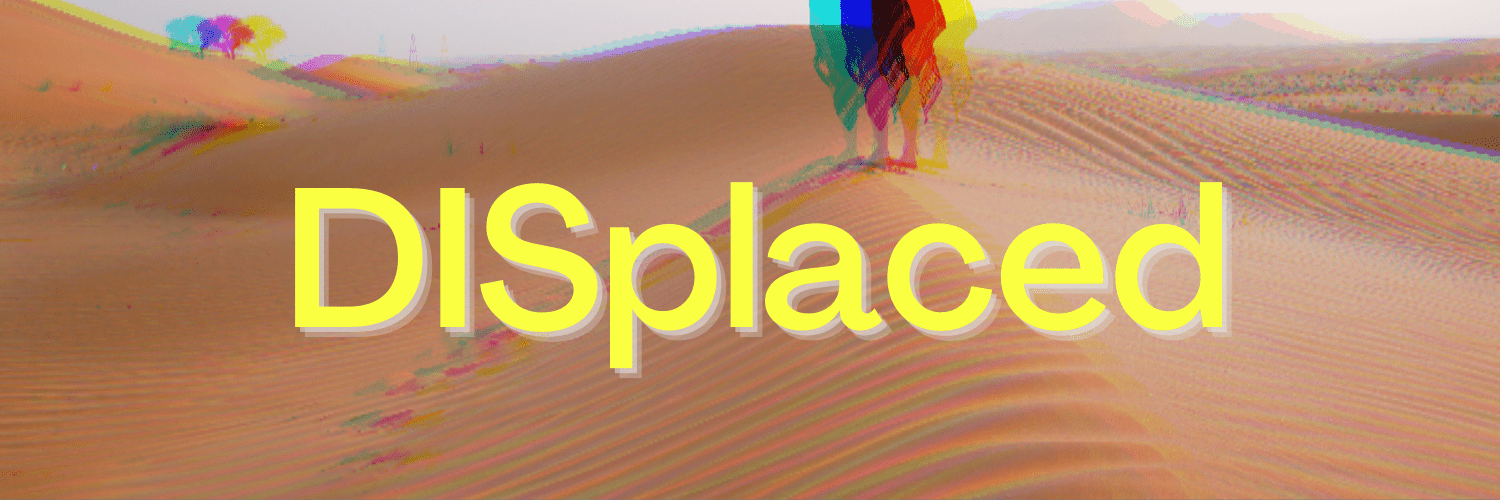
In this series, Girl Museum welcomed artists from around the world to share their work on the theme of displacement.
The selected works explore the feeling of disconnection, of having to redefine and re-examine identity in light of new environments. Whether it is missing their country of birth, a longing for new surroundings, or a desire to connect to a sense of ‘home’, each artist sheds light on the attempt to find grounding in times of instability. While some speak to the ways in which perceptions of the female experience can differ depending on societal contexts and norms, all show how individual expression can act as a medium through which solace can be found.
Special thanks to the artists who contributed works for this show.
Carolyn Arcabascio
Exploring female adolescence in my work goes hand in hand with remembering our relationship to nature. So much of girlhood involves navigating societal conventions and pressures that can leave us feeling alienated from ourselves.
In everyday environments — whether at home, school, or elsewhere — girls must weigh the consequences of authenticity versus conformity. The girls depicted in my work have been called back to nature, which offers a safe space to reflect, be curious, and interact physically with their environment. It’s a return to themselves, a sense of homecoming, in contrast with the displacement they can so often feel in daily spaces.
“Summer Reading”
“Longing”
“Rejoicing”
Heather Shillinglaw
of Edmonton, Alberta, Canada
Heather Shillinglaw, an Appetogasan-Metis, Nehiyaw-Cree, Dene-Chipewyan Salteaux-Ojibway & Scots/French, looked to her Was Nohkom’s (Grandmothers before) for guidance by contemplating the bush for healing, life and sustainability.
Using land based philosophies and narration to help students create their masterpiece, her art forms honor the legacy of ᑭᐦᒋ ᐅᑳᐄᐧᒫᐤ kihci-okâwîmâw – Great Mother, Mother Earth, providing sustenance for mind body and spirit inclusive of Family members, knowledge keepers, elders, historians, archivists, and the experience of the sweat lodge.
Fueled by an ongoing learning journey, she transforms her art using the mediums of sewing, beadwork, painting and installation.
The work ‘Whiskey Scrip’ tells the history and devastation of the Canadian landscape, with Shillinglaw allowing the path of the bison to redefine this land and perception of home. Composed of multiple elements including sculpture, wall hanging and performance, the artwork draws on her grandfather’s telling of the movement of whiskey on the Carlton trail, and her ancestral history involving the making of Canada.
Gravemarkers Bison, Heather Shillinglaw. sewn Bison hides, thread painting, sewn fabrics with couching yarn. photo: Blaine Campbell
Gravemarkers Bear, Heather Shillinglaw. sewn Bison hides, thread painting, sewn fabrics with couching yarn. photo: Blaine Campbell
Detail of Gravemarkers Bear, Heather Shillinglaw. sewn Bison hides, thread painting, sewn fabrics with couching yarn. photo: Blaine Campbell
Júnia Azevedo
of Rio de Janeiro, Brazil
Azevedo’s artistic research is focused on the creation of women’s stereotypes in childhood. Initially in work with Barbie dolls and subsequently other media, she reflects on the role of children’s games and advertising in the reaffirmation of these models.
“My work in visual art talks about the stimulation of desire and consumption through the infantilization of adults, early erotization and the imposition of standards of beauty and behavior” Azevedo writes.
In this series, Azevedo combines this depiction of female stereotypes with refugee identity, showcasing the diaspora that comes with a displacement from home.
Refugiada 1 by Júnia Azevedo, Foto Diogo Calil, 2017.
Refugiada 2 by Júnia Azevedo, Foto Diogo Calil, 2017.
Refugiada 3 by Júnia Azevedo, Foto Diogo Calil, 2017.
Refugiada 4 by Júnia Azevedo, Foto Diogo Calil, 2017.
Sue Hayward
of Australia, now living in Berlin, Germany
My inspirational source is found in the never-ending stories of the human condition, and, in particular, the relationship between man and environment.
Growing up in Australia, I developed a special affinity for nature and I often represent imagery of plants, animals and particularly birds in my work, symbolically conveying different aspects of human expression. This lost connection is definitely cause for feelings of being displaced and in my work, I often explore the concept of loss and a desire for unity, particularly within nature.
These works deal with themes of migration in nature and a connection to the land. In ‘Heartland’ these themes are expressed as a yearning for union with the landscape of my childhood, whereas in ‘The Flight of the Curlews’, themes of displacement are portrayed by the incredible journey of eastern curlews, which migrate from Russia to Australia each year but, sadly, are losing their coastal habitats.
The plight of the curlews resonates with the increasing problem of displacement of animals from their natural habits. With ‘Bridging the Gap’, the figure of a woman becomes the bridge between two worlds, overcoming feelings of separation and polarity.
Heartland, Sue Hayward, 2020. 130 x 190 cm, oil, cold wax medium, acrylic on canvas, gauze and plywood. Photo: Julian Gross
Away with the Birds, Sue Hayward, 2019. 65 x 180 cm, oil, cold wax medium, acrylic on canvas, gauze and plywood. Photo: Lea Gryze
Bridging the Gap, Sue Hayward, 2020. 60x 190 cm, oil, cold wax medium, acrylic on canvas, gauze and plywood. Photo: Julian Gross
By the Light of the Moon, Sue Hayward, 2019/20. 65 x 180 cm, oil, cold wax medium, acrylic on canvas, gauze and plywood. Photo: Julian Gross
The Flight of the Curlews, Sue Hayward, 2020. 60 x 190 cm, oil, cold wax medium, acrylic on canvas, gauze and plywood. Photo: Lea Gryze
Shivi Sharma
of Delhi, India
My paintings are evolved from a soundless world. Being deaf, the substance of the objects around me are conceived as forms and texture. I blend semi-representative elements and abstract visual patterns in painting, such as architectural fragments, indoor and outdoor dwellings, nature, wind, water ripples and cloud movements.
In my works, I try to discuss the human existential issues which we face in a city as a modern human being. I often feel that the visual experience of a city dweller is always articulated with geometrical divisions of multiple architectural walls, and human life emerges from the interior and exterior niches of the city. The relationship of forms in my paintings are not at all conceptual, only aesthetically balanced symbols of architecture and nature. My paintings are the simple visual records of my travels in India, with the different geographical and cultural features depicted on my canvases.
The neutral entity of the primary, secondary and other colours in compositions represent my personal feelings about the objects. My memories of different terrains where I have been psychologically attached often come as multicolored disorder dreams and some irrational fantasies on canvases. The moving abstract patterns represent the invisible moving force of urban life where everybody alienates and introspects about what we are.
The Journey, Shivi Sharma, acrylic on canvas, 2014.
Interior of Concrete City, Shivi Sharma, acrylic on canvas, 2012.
View of Balcony, Shivi Sharma, acrylic on canvas, 2014.
The Window, Shivi Sharma, acrylic on canvas, 2012.
The Restaurant, Shivi Sharma, acrylic on canvas, 2012.
Sarah Jacquier
of Paris, France
This film explores the fragility of our personal identity. From the moment we are born to the end of our life, the way we look at ourselves is constantly evolving according to the situations in which we are immersed. This visual object is a projection of myself in full transformation.
Since we cannot look at our person as an external object, art becomes a mirror to look at our soul.
Our self, from birth to death, is in a state of flux. It evaporates and gets filled with the rhythm of our lives and we are never exactly the same as the moment before. The person I am has changed so much since I was a young girl.
We are always changing and it is never too late to change. Let’s always remember that we can become the person we really want to be.
“I have searched myself, and all I found was my persona.” by Sarah Jacquier reposted with permission.

